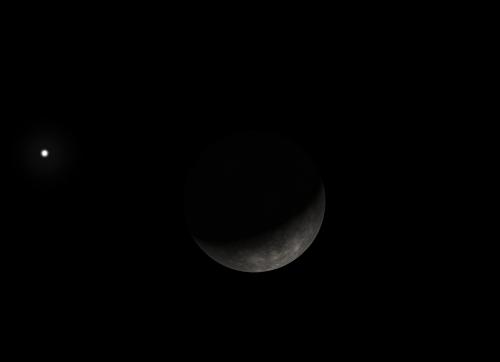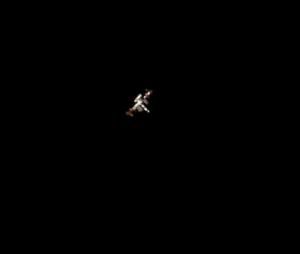Celebration of Space - January 29, 2021
After a couple weeks of fabulous evening passes of the International Space Station (ISS), sighting opportunities will continue through the weekend and next week. Though the ISS passes over our location several times per day, not all passes are visible to those of us stuck on the ground. To catch a view of the ISS passing overhead, you need to be at a location where the Sun has already set, and the station is overhead and in direct sunlight. It is the reflection of sunlight off the station that we see during visible passes. Sometimes this happens in the morning before sunrise, in the evening after sunset, or not at all. Over the next several days, the ISS will be visible in the evening hours over the United States, specifically the Northeast. Here are some notable passes worth stepping out into the cold to see:
Fri, Jan 29 at 6:17 pm, starting in the NNW, rising to 16°, and into orbital sunset.
Sat, Jan 30 at 5:30 pm, starting in the NNW, rising to 15°, heading towards the NE
Sun, Jan 31 at 6:19 pm, starting in the NW, rising to 23°, and into orbital sunset
Mon, Feb 1 at 7:08 pm, starting in the NW, rising to 29°, and into orbital sunset
Tue, Feb 2 at 6:21 pm, starting in the NW, rising to 42°, heading towards the ENE and into orbital sunset.
Wed, Feb 3 at 5:34 pm, starting in the NW, rising to 30°, heading towards the E
Wed, Feb 3 at 7:10 pm, starting in the WNW, rising to 38°, and into orbital sunset
Thu, Feb 4 at 6:23 pm, starting in the WNW, rising to 73°, heading towards the SE, and into orbital sunset ← Awesome Pass!
These passes are specific for Southern New England and generally acceptable for the entire Northeast. For daily pass times, visit our satellite prediction utility at each day. For pass times specific to your location, visit NASAs Spot the Station. Nightly passes of the ISS will continue over our region until November 9th. So put these times on your calendar and set your alarm. Step outside with your family, friends, or just your fabulous self, and catch sight of humanity’s only continuously inhabited space based residency passing over.
Do you have a good view of the western horizon? If so, take a moment to step outside this evening between 5:30 pm and 5:55 pm for a last chance to see Mercury in the evening sky this winter. Mercury completes about four full orbits around the Sun for every one orbit that Earth makes. This offers multiple opportunities to catch a naked eye view of Mercury, either before sunrise or after sunset. Mercury passed maximum eastern elongation this past Saturday, January 23, 2021, which is when Mercury is at its best viewing in the evening sky after sunset, and is now progressing in its orbit towards inferior conjunction, which is when Mercury will arrive in between Earth and the Sun. This will happen on February 8, 2021. If stepping outside, dress warm, arrive at a viewing location with a view of about 3-5° above the western horizon between 5:30 and 5:55 pm. Mercury will be visible just slightly south of due west, and will appear as the brightest star in that part of the sky. If you have a telescope, set it up and catch a view of Mercury’s slender waning crescent phase. If you happen to catch a photo, post it on our Facebook and we will post it on our timeline. Happy viewing!
- Author:
- Scott MacNeill
- Entry Date:
- Jan 29, 2021
- Published Under:
- Scott MacNeill's Columns



